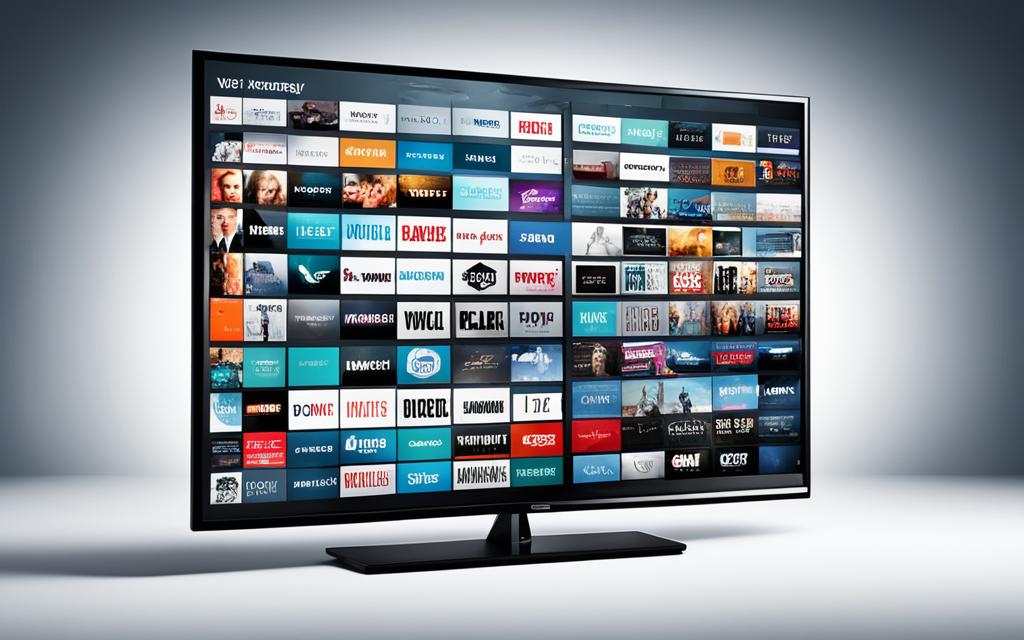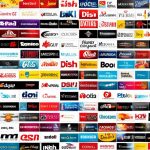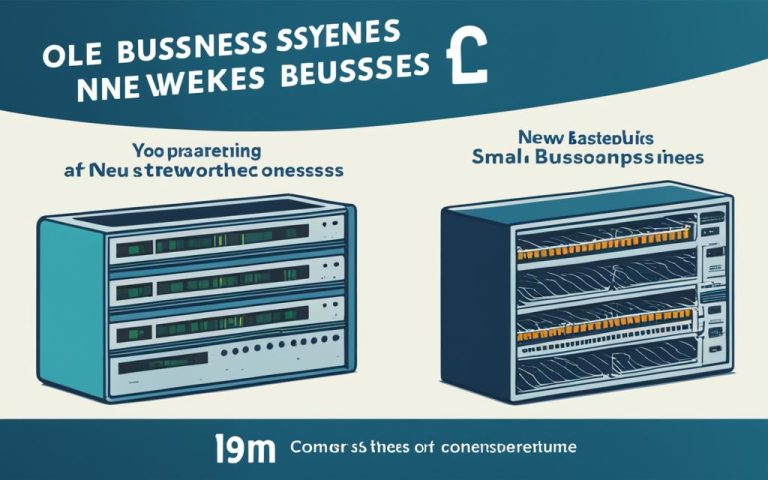Network shows and streaming shows offer different ways to watch TV. Network shows have been around for decades. Streaming shows have become very popular in recent years. We will look at what makes network shows special and what streaming shows might lack.
Key Takeaways:
- Content Dominance: In the late 1970s, the three major networks (NBC, ABC, and CBS) accounted for more than 95% of prime-time viewing on television1.
- Production Costs: The cost for a sponsor to produce a one-hour TV show increased from approximately $35,000 in 1952 to around $90,000 by the end of the 1950s1.
- Sponsorship: By 2006, corporate sponsors funded over 25% of all public television programs1.
- Government Funding: In 2007, there was a proposal to eliminate more than half of the federal allocation to public broadcasting, which was overturned1.
- Viewership: During the mid-1990s, 43% of U.S. households were watching the Big Four networks (ABC, CBS, NBC, Fox) during prime time1.
- Broadcast Rights: In 1994, Fox acquired the rights to National Football League (NFL) games with a $1.58 billion deal, securing four years of NFL game broadcasts1.
The Presence of Ads
Network shows and streaming shows differ in one big way: ads. Traditional TV shows often have commercials that interrupt the show. These ads can be annoying and break the flow of the story. Streaming shows, however, are usually ad-free, letting viewers watch without interruptions. This change is seen in the 55% increase in time spent with ad-supported apps since H2 20202.
More people are choosing streaming platforms over traditional TV, and they prefer shows without ads. Services like YouTube, Netflix, Pluto, Tubi, and The Roku Channel are popular because they don’t have ads. In H2 2022, these platforms took up a big part of the time spent watching online videos2. Most American households, about 83%, own a Connected TV device that lets them stream without ads2.
Network shows make money from ads, but streaming services use subscriptions and ads to earn. This change comes from online ads not being as effective, with less than 1% of viewers clicking on them3. Over 40% of internet users in the U.S. use ad blockers, which hurts ad revenue for content creators and platforms3.
Streaming has to find ways to make money without ads. Traditional TV made a lot of money from affiliate fees and national ads, about $100 billion last year4. Streaming made around $19 billion from subscriptions and ads4. Streaming makes less money per hour watched than traditional TV, which affects its earnings4.
Despite the challenges, streaming services like Disney+ are offering ad-supported versions to make more money while keeping a big audience3. But switching from traditional TV to streaming is hard for media companies. Traditional TV makes a lot more money per home than streaming4. This difference, along with fewer pay TV subscriptions and less affiliate fee growth, shows the need for new ways to keep streaming platforms financially stable4.
Creative Freedom and Content Restrictions
In the world of TV, creative freedom and content restrictions are always being talked about. Network shows follow strict rules set by broadcasting standards. But streaming shows have more freedom, leading to stories that push boundaries.
Recently, big names like Apple, Netflix, and Amazon have changed the game in streaming content. Apple focuses on shows that are family-friendly, avoiding explicit content. Their CEO, Tim Cook, even stopped a show called “Vital Signs” because of its controversial themes5.
On the other hand, Netflix and Amazon go for more daring content. Shows like “House of Cards” on Netflix have won awards and praise for their bold stories6. Netflix lets creators be creative, drawing big names in TV to work with them7.
Apple chooses to limit content for quality over quantity. They follow Steve Jobs’ Pixar approach, aiming for a responsible platform. Apple also removes content that promotes hate or conspiracy theories from their App Store5.
But content restrictions aren’t just for streaming. Companies like Disney also balance between family-friendly and adult content. Finding the right balance is hard for the entertainment industry5.
In the end, TV has changed a lot, thanks to streaming. While Apple sticks to family-friendly content, Netflix and Amazon go for more daring stories. This variety benefits viewers, offering a wide range of stories in today’s digital world.
Production Value
In TV production, production value is key to a show’s quality and appeal. It’s about how well a show looks and feels, thanks to the budget and resources used. Network shows and streaming shows differ a lot in this area.
Network shows get big budgets from big media companies. This lets them spend on fancy sets, costumes, special effects, and famous actors. These things make the show look amazing and pull viewers in.
Streaming shows, though, often have smaller budgets. This means they might not have the same level of sets, effects, or actors as network shows. But, this doesn’t mean they can’t make great content.
Streaming shows can be great at telling stories and creating characters. They’ve won over fans around the world with their unique stories. This shows that it’s not just about how much money you spend.
Streaming shows are getting more money now, thanks to the growing streaming industry. This means they can make shows that look and feel as good as network shows. They’re getting better at making high-quality content.
In the end, network shows usually have more money and look better. But streaming shows show that you can make great content even with less money. Both types of shows offer something special for viewers to enjoy.
| Network Shows | Streaming Shows |
|---|---|
| Large budgets | Limited budgets |
| Elaborate sets | Modest set design |
| Extravagant costumes | Restricted costume choices |
| Impressive special effects | More restrained use of special effects |
| Renowned actors | Smaller pool of actors |
Reference:
4 Adapted from statistical data from the cable network business segment of major U.S. media companies
Release Schedule
Network shows and streaming shows have different ways of releasing episodes8. Network shows come out weekly, at set times. This makes viewers look forward to new episodes and talk about what’s coming next8. Streaming shows, however, release all episodes at once, letting viewers watch the whole season in one go8.
Choosing between weekly releases and binge-watching depends on what viewers like and the type of show. Both methods have their pros and cons. For Netflix, releasing all episodes at once has made binge-watching very popular9. This way, viewers can watch shows when they want and get fully into the story8. But, it might lead to people signing up just for a show and then canceling their subscription9.
Weekly releases for network shows keep viewers coming back and make them more loyal. It’s like having a regular time to watch your favorite shows, which makes it harder to just cancel your subscription9. Some platforms like HBO Max mix binge-watching with weekly releases, based on what the show is and what viewers prefer9. This way, they can plan their content better and manage it well9.
Studies show that shows released weekly get more views than binge-released ones8. This shows that many people still like watching shows this way and it keeps them engaged. Also, binge-released shows tend to lose viewers faster after the first few episodes than shows that come out weekly8.
| Statistical Data | Reference |
|---|---|
| 72% of US consumers regularly binge-watch shows | 8 |
| 45% of audiences binge an entire show within the first five days of its release | 8 |
| 67% of viewers finished the full series of Netflix’s Depp v. Heard, the highest-ranked show with a staggered release | 8 |
| Netflix dominates the Video on Demand (VoD) market with 213 million subscribers | 9 |
| Linear TV times, where viewers had a weekly appointment with their favorite shows, are being reintroduced by streaming platforms like HBO Max and Disney + | 9 |
Viewing Experience and Engagement
Network shows have a special appeal when it comes to watching. They offer a shared experience, often watched live or recorded. This leads to discussions with family, friends, or colleagues, creating a sense of community10.
This real-time engagement makes the content more enjoyable. It also starts conversations that spread like wildfire, making the show buzzworthy10.
On the flip side, streaming shows are convenient and flexible. You can watch them on-demand. But, they miss out on the real-time buzz and social media talks that network shows get10.
Streaming shows are often binge-watched alone. This limits the chance for immediate talks and shared experiences10.
Social media has changed how we watch and interact with shows. 47% of Gen Z and a third of millennials love social media videos and live streams more than other types of videos10.
Through comments, likes, and shares, social media lets viewers connect with content and creators. This creates a strong sense of community and engagement10.
Social media is also key in finding new shows and movies. Over half of Gen Z and millennials trust social media more for recommendations than streaming services10.
More than half of consumers and 59% of Gen Z watch shows or movies after seeing them on social media10. This shows how big an impact social media has on what we watch and how we watch it10.
Social media and streaming have changed how we find and enjoy content. They’ve made recommending and sharing shows easier and created new ways to connect with others around certain shows or creators10.
With social media’s growing power, engaging and interactive watching has become key to enjoying content today10.
Variety and Diversity
Network and streaming shows both shine in their own ways when it comes to variety and diversity. Network shows reach a wide audience and offer many genres and perspectives. This makes them appealing to different people11.
Streaming shows are known for their bold content and unique stories. They let creators try new things, making room for diverse stories. This brings more voices to the screen, especially for groups often overlooked11.
Even with progress, streaming shows still have work to do. They might not cover all genres or groups equally. There’s still a need for more diversity in representation and variety11.
Data shows how far we’ve come in making TV more inclusive. For example, most top TV shows in 2021-2022 included diverse characters. Also, a big part of the U.S. population is diverse11.
Black talent feels there’s still a long way to go, but South Asian and East Asian representation is getting better. Hispanic and Native American talent is less seen, and LGBTQ+ is most represented on cable11.
Women in film have made big strides, with more directors and writers. Women now make up nearly half of streaming film leads. But, there’s still work to be done in some areas1213.
There’s a mix of over and underrepresentation in the entertainment industry. Black actors are well-represented, but directors and people with disabilities are not enough1213.
We need to keep pushing for more diversity and representation. A wider range of stories and perspectives makes TV better for everyone. This way, the industry can truly reflect the world we live in.
Statistical Representation in the Entertainment Industry
| Group | Theatrical Films | Streaming Films |
|---|---|---|
| Women Directors | 14.6% | 25% |
| Women Writers | 27% | N/A |
| Women Cast Members | 41% | N/A |
| Black Actors | 14.8% | N/A |
| Asian Actors | 6.5% | N/A |
| Middle East/North African Actors | 0.9% | N/A |
| White Actors | N/A | 57.5% |
| People of Color | 21.6% | 33.3% |
| Women Leads | 38.6% | 48.5% |
| People with Disabilities (Lead Roles) | 9.1% | 6.1% |
Discoverability
Finding new shows and movies is easier with traditional networks because they promote their content well. But, streaming has made it harder to find new things to watch.
Streaming sites use algorithms and ratings to help you find your next favorite show or movie. These tools can uncover hidden treasures but can also overwhelm you with too many choices14. Over a quarter of viewers spend more than 10 minutes picking what to watch, showing how hard it is to find something good14.
To make it easier, streaming sites offer curated content and personalized recommendations. These suggestions are based on what you like, aiming to improve your viewing experience14. Curated content gives you a list of shows and movies that match your interests, saving you time. Personalized recommendations use algorithms to suggest content you might enjoy, based on what you’ve watched and liked before.
Being easy to find is crucial in a crowded streaming market. Services that can suggest content you’ll like have a better chance of keeping viewers14.
Exclusive content also helps with discoverability. Streaming sites offer shows and movies you can’t find anywhere else. For example, half of the 2022 Emmy nominees for Outstanding Drama series were only on streaming platforms, making them more appealing15.
But, there are still challenges. Streaming sites must balance making it easy to find content with not overwhelming you. Personalized recommendations can make you more engaged, but they might keep you watching the same type of content too much16.
Platforms like Twitch and YouTube have their own discoverability issues. Twitch often suggests content similar to what you’ve watched before, which might get repetitive16. But, you can sort streams by viewers to find less popular ones16. Twitch’s “Just Chatting” section offers a variety of content, making it more diverse16. YouTube’s algorithm is good at showing you content you’ll like, unlike Twitch16.
To help with discoverability on Twitch, the platform uses raids and hosts to introduce new streamers to audiences16. But, it often favors bigger channels, making it harder for smaller ones to grow16. Working with big channels can also affect the success of smaller ones16.
In the streaming world, being easy to find is key to keeping viewers. By using algorithms, curated content, and innovative ways to discover new things, streaming services can overcome the challenges of too much content. This helps viewers easily find their next favorite show or movie141516.
Longevity and Syndication
Network TV shows used to last longer than streaming shows. They could go for many seasons, building a big fan base. This helped them stay popular in TV.
But now, streaming services like Netflix, Hulu, and Amazon Prime Video are getting more popular. This is changing how long TV shows last and how they are shared.
Recently, Netflix has started canceling shows more often, showing a big change in TV17. They usually stop a show after three seasons, which is shorter than before17. Netflix likes to keep their content fresh and diverse, which means shows don’t always last long17.
Streaming services want new viewers more than keeping old ones17. They don’t focus on making shows last long like network TV does. This makes it harder for streaming shows to make money from reruns17.
Network shows can make a lot of money if they last over 100 episodes17. But streaming shows usually stop after three seasons17. This lets them tell stories without getting old or boring17. But, this way of making shows is different and can be tough for creators17.
“The average show now lasts between three and four seasons, reflecting a shift in television content.”17
Streaming has changed how people watch TV and what they pay for it18. More people are watching streaming services, but the growth is slowing down18. Most American homes now have at least one streaming service, and people are subscribing to about 3.7 of them18. People are getting tired of paying for so many services, so streaming companies need to be careful with their costs18.
“Netflix often runs shows for two to three seasons, breaking the traditional threshold of six years for standard TV series.”19
Netflix is known for making shows last only two to three seasons19. This makes it hard for shows to keep going on another network19. Netflix has canceled many shows, like Marvel series and Love, after just a few seasons19. Only a few shows have made it past three seasons19.
Netflix uses algorithms to decide what to keep and what to cancel19. If a show gets good reviews, it might get another season19. But shows that are just okay usually don’t get much more attention19. Netflix keeps making new shows to attract new viewers and keep people coming back19.
| Network Shows | Streaming Shows |
|---|---|
| Longevity: Multiple seasons | Shorter runs: Often two to three seasons |
| Eligible for syndication | Exclusivity-focused, less opportunity for reruns or syndication |
| Potential for lucrative syndication deals | Creatives face unique challenges due to shorter show lifespans |
The way TV shows last and get shared is changing a lot. Network shows can make a lot of money from reruns. But streaming shows have the chance to tell stories in a focused way. As TV changes, creators and viewers need to adapt to these new trends.
Critical Acclaim and Awards
Network shows often get more praise and awards than streaming shows. They reach more people and are well-known in the industry. This gives them a better chance to get the recognition they deserve.
Traditional broadcast networks have made many acclaimed shows over the years. These shows are loved by both viewers and award groups. They are praised for their great stories, acting, and quality production.
Us, made by Jordan Peele, was a hit and made $255 million worldwide on a $20 million budget20. It left a big mark on both fans and critics, getting praise for its deep story and strong acting. Like it, Greta Gerwig’s Lady Bird did well with a $10 million budget, making $49 million in the U.S. and $89 million globally20.
Streaming shows are getting more recognition lately, but they still face hurdles. They have to compete with traditional network shows. Yet, some streaming shows have won awards and praise.
The success of Parasite and Girls Trip shows how important praise and audience love are20. Parasite, by Bong Joon-ho, won big awards, including Best Picture at the Oscars. Girls Trip, starring Queen Latifah and Jada Pinkett Smith, earned 82% of its $140 million in the U.S., showing its broad appeal20.
Critical praise and awards mean a lot for a show’s quality and future success. They help streaming shows stand out from traditional network shows. These honors boost their reputation in the industry.
Global Reach and Accessibility
Streaming shows are reaching people all over the world like never before. Platforms like Netflix are working hard to bring in viewers from everywhere. They’re doing this by adding more shows and working with partners around the globe21.
Korean dramas, or K-dramas, have become super popular worldwide. Netflix saw a huge jump in K-drama fans in the US after “Squid Game” hit big21. This shows how streaming can bring new kinds of shows to people everywhere.
In the Asia-Pacific region, streaming services are huge. Netflix alone has 1.4 million paid subscribers there as of January 202321. This shows how easy it is for people to watch their favorite shows.
In India, the number of people watching streaming services jumped from 63 million in 2020 to 80 million in 202121. This shows how streaming has made lots of content available to a huge audience.
Shows from all over the world are getting noticed thanks to streaming. For example, the French series “Lupin” on Netflix was watched by 76 million people21. This proves that streaming lets different kinds of shows reach a big audience.
Streaming has changed how we watch movies and TV shows. Services like Netflix and Disney+ have changed the game with their direct approach. This has led to fewer people going to the movies and watching traditional TV22.
One big plus of streaming is how easy it makes it to find lots of different shows. Old TV networks often didn’t show everything. But streaming lets you watch all sorts of shows that might not have been on TV before22.
Streaming uses data to understand what viewers like. This helps them make shows that people will enjoy. By looking at what people watch and like, streaming services can make shows that appeal to many different kinds of viewers22.
| Platform | Number of Most-Watched Streaming Series (2023) |
|---|---|
| Netflix | Majority of most-watched TV shows including “Black Mirror,” “Squid Game,” “You,” and “Glamorous” |
| Disney+ | Highly-ranked streaming series such as “The Mandalorian,” “Loki,” “Secret Invasion,” and “Ahsoka” |
| Apple TV+ | Popular original series like “Ted Lasso” |
| Hulu | Well-received shows including “Only Murders in the Building” |
| Prime Video | Hit titles like “The Bear” and “House of the Dragon” |
Disney+ has become a big name in streaming. According to Whip Media, it had the most-watched shows in 202323. This shows how popular Disney+ is worldwide.
Measuring viewership has changed with streaming. Now, we look at more than just how many households watch. We also see individual viewers, how long they watch, and what they do online. This helps streaming services understand their reach and how their shows affect people all over the world23.
In short, streaming has made it easier for people all over the world to watch different kinds of shows. With investments, partnerships, and smart use of data, platforms like Netflix and Disney+ are changing how we watch TV. This has led to big changes in what people like to watch212223.
Conclusion
Network shows and streaming shows give us different ways to watch TV, each with its own good points and downsides. Network shows are great for shared viewing, high production quality, easy discovery, and reaching people all over the world. Streaming shows, however, offer more creative freedom, let you watch when you want, and have a wide variety of content.
Looking at the numbers, in 2019, a record 18.6 million people in India watched an OTT event at the same time on Disney Entertainment’s Hotstar24. By mid-2017, 58 percent of US homes watched OTT content every month24. The CRTC in Canada defined OTT services as those that give Internet access to shows without needing a special setup in 201124.
Also, Netflix is the top choice for young viewers in the UK25. Young people aged 16 to 24 now watch broadcast TV for about 53 minutes a day, which is less than before25. Also, fewer UK households signed up for at least one SVOD service, dropping to 19.2m in the second quarter25.
The growth of video streaming is huge, with big steps like YouTube becoming a hit in 200526, and Netflix starting its video-on-demand service in 200726. The “streaming wars” got bigger with Disney+ in 2019, making the competition fierce26. The COVID-19 pandemic made streaming even more popular as people looked for fun at home26.
FAQ
What is the main difference between network shows and streaming shows?
Network shows air on traditional TV and have ads. Streaming shows are ad-free and on subscription-based platforms.
Do network shows have content restrictions?
Yes, they must follow rules and guidelines set by broadcasting standards.
How does the production value differ between network shows and streaming shows?
Network shows usually have bigger budgets and better production quality than streaming shows.
Are network shows released on a different schedule compared to streaming shows?
Yes, they come out weekly, while streaming shows are released all at once for binge-watching.
Do network shows offer a shared viewing experience?
Yes, they are often watched live or recorded. This creates a shared experience with family, friends, or colleagues.
How does the variety and diversity of content differ between network shows and streaming shows?
Network shows offer more genres, formats, and perspectives than streaming shows.
How do viewers discover network shows and streaming shows?
Network shows get promoted by traditional broadcasters. Streaming shows use algorithms and user ratings to be discovered.
Do network shows have a longer lifespan compared to streaming shows?
Yes, successful network shows can go for many seasons and get syndication deals. Streaming shows may not last as long.
Are network shows more likely to receive critical acclaim and awards?
Yes, they often get critical praise and awards because of their industry recognition.
Do network shows have a broader global reach compared to streaming shows?
Yes, they are distributed worldwide and translated for global audiences, making them more accessible globally.
Source Links
- https://courses.lumenlearning.com/suny-massmedia/chapter/9-3-issues-and-trends-in-the-television-industry/ – 9.3 Issues and Trends in the Television Industry
- https://www.iab.com/wp-content/uploads/2023/03/TVision-State-of-CTV-2H-2022.pdf – PDF
- https://www.theatlantic.com/technology/archive/2023/06/advertising-revenue-google-meta-amazon-apple-microsoft/674258/ – Online Ads Are About to Get Even Worse
- https://dougshapiro.medium.com/one-clear-casualty-of-the-streaming-wars-profit-683304b3055d – One Clear Casualty of the Streaming Wars: Profit
- https://appleinsider.com/articles/18/09/26/the-other-problem-with-apples-content-restrictions—-creative-freedom – The other problem with Apple’s content restrictions — creative freedom | AppleInsider
- https://www.forbes.com/sites/dinagachman/2013/11/23/amazons-betas-how-creative-freedom-can-lead-to-quality-material/ – Amazon’s ‘Betas’: How Creative Freedom Can Lead To Quality Material
- https://www.researchgate.net/publication/368494726_Creative_Freedom_and_Self-Limitation_of_Streaming_Media_Platform_Take_Netflix_Animation_as_an_Example – (PDF) Creative Freedom and Self-Limitation of Streaming Media Platform: Take Netflix Animation as an Example
- https://www.vox.com/culture/353427/why-does-tv-feel-so-underwhelming-yet-so-overwhelming – Why does TV feel so underwhelming yet so overwhelming?
- https://www.vsn-tv.com/en/streaming-platforms-publication-vsncrea/ – Why are streaming platforms coming back to weekly publication?
- https://www2.deloitte.com/us/en/insights/industry/technology/digital-media-trends-consumption-habits-survey/2024/online-creators-and-the-impact-of-social-media-on-entertainment.html – Social media and creators drive viewers to TV shows, movies, and games
- https://variety.com/2021/tv/news/representation-high-inaccurate-diversity-nielsen-1235129378/ – Representation Is at an All-Time High on Screen, but Still Inaccurate, Nielsen Report Says
- https://deadline.com/2023/03/streaming-films-more-diverse-than-theatrical-features-study-1235313145/ – Streaming Films Are Far More Diverse Than Theatrical Features, Study Finds
- https://mediasmarts.ca/digital-media-literacy/media-issues/diversity-media/visible-minorities/racial-cultural-diversity-entertainment-media – Racial and Cultural Diversity in Entertainment Media
- https://variety.com/vip/content-discovery-is-streamings-biggest-struggle-1235524458/ – Content Discovery Is Streaming’s Biggest Struggle
- https://www.streamingmedia.com/Articles/ReadArticle.aspx?ArticleID=155637 – Streaming Viewership Has Finally Surpassed Cable: Here’s Why & How to Sustain Growth
- https://www.theverge.com/2019/9/25/20883683/twitch-recommendation-algorithm-discover-new-streamers-category-please-help-me – The hardest part of Twitch is finding new stuff to watch
- https://www.theringer.com/tv/2020/8/11/21363234/high-fidelity-canceled-streaming-tv-series-life-span – The Life Span of Streaming TV Series Is Shrinking
- https://dougshapiro.medium.com/medias-shift-from-growth-to-optimization-bf4dd6f3e924 – Media’s Shift from Growth to Optimization
- https://deadline.com/2019/03/netflix-tv-series-cancellations-strategy-one-day-at-a-time-1202576297/ – Feeling The Churn: Why Netflix Cancels Shows After A Couple Of Seasons & Why They Can’t Move To New Homes
- https://pro.imdb.com/content/article/entertainment-industry-resources/featured-articles/how-is-the-success-of-films-and-tv-shows-measured/GLFTC8ZLBBUSNTM3 – How is the success of films and TV shows measured?
- https://globaledge.msu.edu/blog/post/57226/streaming-services-are-bolstering-the-international-entertainment-industry – Streaming Services are Bolstering the International Entertainment Industry
- https://digitalagencynetwork.com/the-impact-of-streaming-services-on-the-entertainment-industry/ – The Impact of Streaming Services on the Entertainment Industry
- https://rehack.com/culture/the-most-watched-tv-shows-in-the-world/ – The Most Watched TV Shows in the World (2024) – ReHack
- https://en.wikipedia.org/wiki/Over-the-top_media_service – Over-the-top media service
- https://www.theguardian.com/tv-and-radio/2022/aug/17/younger-viewers-shun-traditional-tv-channels-as-90-opt-for-streaming-services – Younger viewers shun traditional TV channels as 90% opt for streaming services
- https://www.britannica.com/technology/streaming-media – Streaming media | Definition, History, & Facts



















